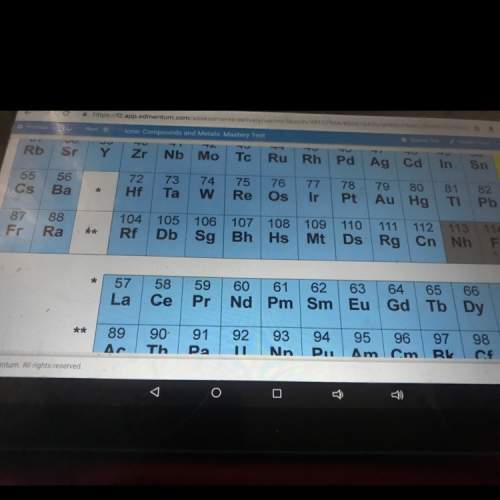
Chemistry, 16.10.2019 21:00 electronia
Consider the following elementary reaction: k + br2 → kbr + br. (a) use simple bimolecular collision theory to determine the value of "kmax" at 600 k. use d12 = 0.400 nm and express k in l mol-1 s -1 .
(b) the observed rate constant at 600 k is ~ 1.4 x 1012 l mol-1 s -1 . this value is larger than what you should have calculated in part (a). we account for this atypical result via a harpoon mechanism. as the k atom approaches a br2 molecule, an electron jumps from k to br2. the resulting cation (k+ ) and anion (br2 – ) are then drawn toward one another, potentially causing a collision that may not have occurred without the attraction. use the observed rate constant to find an effective d12 for this reaction; that is, calculate the value of d12 required for collision theory to agree with experiment. we can use this value as an estimate of the distance over which the electron transfer occurs.

Answers: 1


Other questions on the subject: Chemistry

Chemistry, 22.06.2019 02:30, sotoamerica0814
98 ! and brainliest plz ! the below reaction can be categorized as more than one type of reaction. which reactions are these, and what are the types of reactions?
Answers: 1


Chemistry, 22.06.2019 09:00, 2024cynthiatercero
Which two scientific disciplines are bridged by pharmaceutical drugs? chemistry and forensics chemistry and medicine biology and forensics biology and criminology
Answers: 3

Chemistry, 22.06.2019 14:00, hannahhoskings6989
What was bohr’s contribution to the planetary model
Answers: 1
You know the right answer?
Consider the following elementary reaction: k + br2 → kbr + br. (a) use simple bimolecular collisio...
Questions in other subjects:

Mathematics, 09.06.2021 18:50

Mathematics, 09.06.2021 18:50


Engineering, 09.06.2021 18:50

Mathematics, 09.06.2021 18:50

Mathematics, 09.06.2021 18:50



Mathematics, 09.06.2021 18:50




